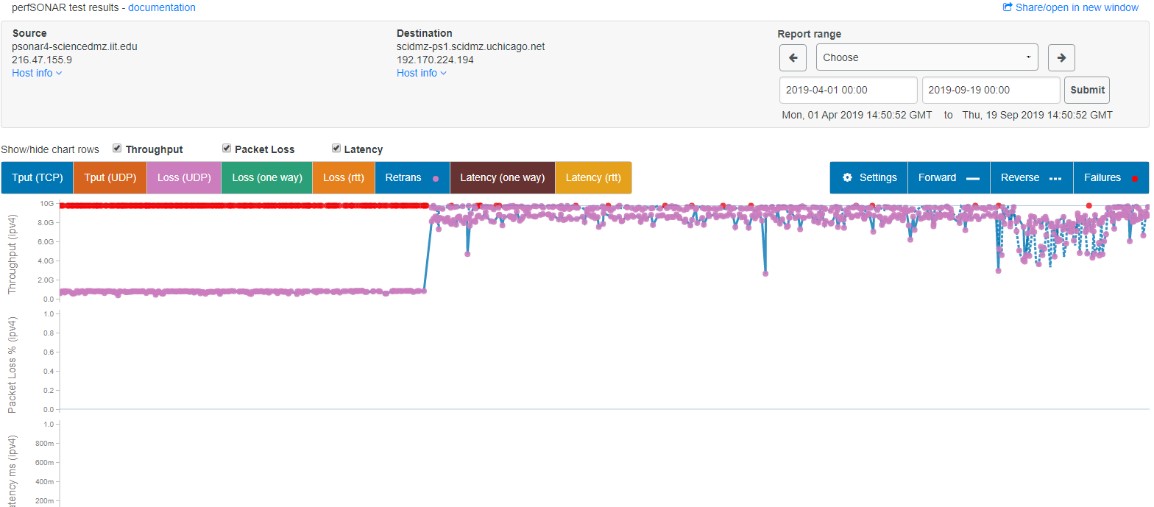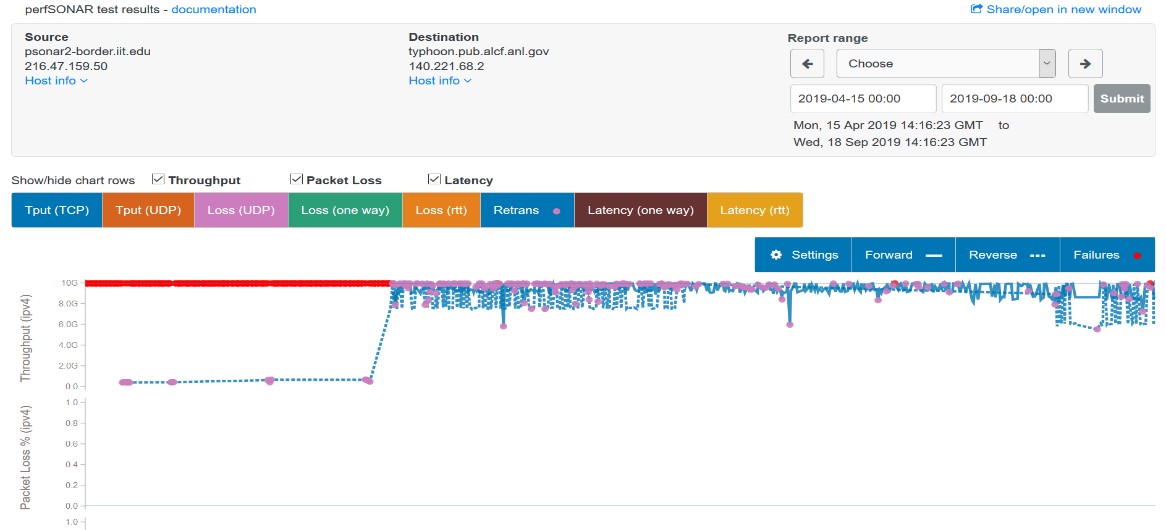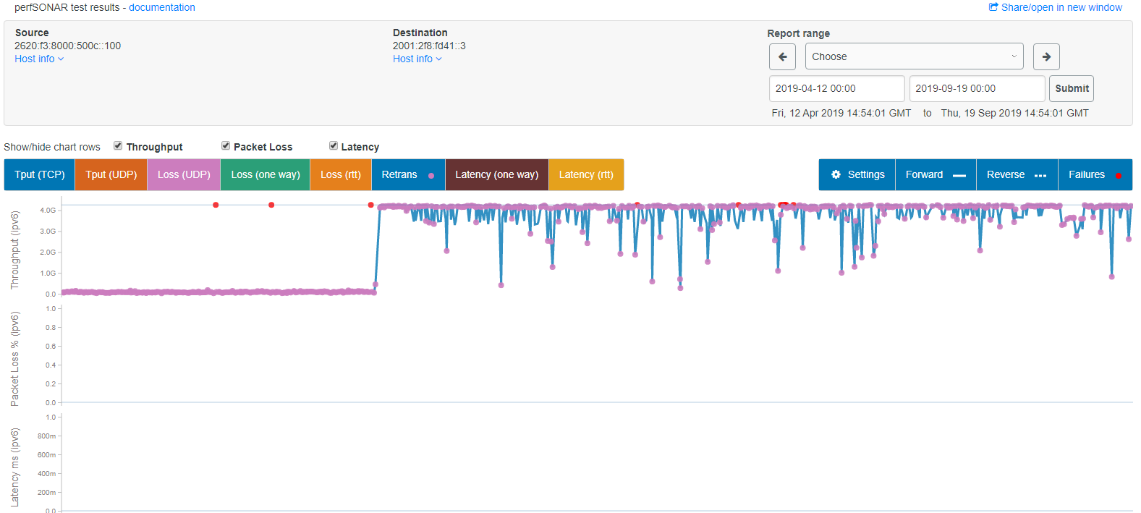The following were the main objectives of Illinois Institute of Technology’s (Illinois Tech) NSF Campus Cyberinfrastructure grant:
- Interconnect the Illinois Tech campuses to Internet2 and facilitate the Illinois Tech community’s access to this infrastructure;
- Increase the bandwidth between the Research Data Center and the Internet2 exchange node, thereby increasing access for Chicago’s South Side community to a high-throughput infrastructure;
- Provide multitenancy support and connect with other world-class universities and institutions at throughput speeds sufficient for practical end-to-end research collaborations;
- Establish a highly-secure research network that prevents unauthorized access so projects involving sensitive data and/or grantor security requirements can be performed on campus, rather than at off-site facilities; and
- Optimize network performance using perfSONAR.
As demonstrated below, Illinois Tech has met all of the project’s objectives, including the upgrade of the network connection between the university’s Mies Campus and the biggest Internet exchange in the Midwest, Equinix Chicago, from 10Gbps to 40Gbps, leveraging the newly-acquired network hardware. At the same time, Illinois Tech upgraded the link between Equinix Chicago and one of the major Internet2 nodes in Chicago, the StarLight facility, to 10Gbps, thus completing the upgrade of Illinois Tech’s Internet2 presence from 1Gbps to 10Gbps. The university chose modular hardware so it could execute further upgrades to increase its throughput as future needs arise. The perfSONAR graphs shown below highlight the throughput before and after the upgrade, including traffic between:
- Illinois Tech and the University of Chicago using IPv4;
- Illinois Tech and Argonne National Laboratory using IPv4; and
- Illinois Tech and Japan’s Network Information Center in Tokyo using IPv6.
To the University of Chicago:
The following perfSONAR graph illustrates the traffic between Illinois Tech and UChicago when it operated at only 1Gbps and necessitated many retries because of the limited throughput. Upon the project’s completion, the throughput increased to 10Gbps and resulted in fewer failures. This graph also demonstrates the impact the project has had on the research collaboration between the two Chicago South-Side universities.
This graph can be accessed at https://psonar4-sciencedmz.iit.edu/toolkit/.

To Argonne National Laboratory:
The traffic to Argonne National Laboratory (ANL), a national science and engineering research laboratory, was limited to 1Gbps; upon completion of the project, the throughput between Illinois Tech and ANL increased to 10Gbps, providing even greater support for those jointly-appointed researchers to conduct research at both sites and greater collaboration between the two organizations, benefiting faculty, researchers, and students.
This graph can be accessed at https://psonar3-core.iit.edu/toolkit.

To the Japan Network Information Center, Tokyo
The following perfSONAR graph demonstrates international research collaboration and the use of IPv6 between Illinois Tech and the Japan Network Information Center in Tokyo. It shows the high throughput available using IPv6 between the university and a world-class organization, opening up new avenues for collaboration for Illinois Tech’s and Chicago’s South Side communities.
This graph can be accessed at https://psonar2-border.iit.edu/toolkit/ and https://psonar4-sciencedmz.iit.edu/toolkit/.

The newly-established Science DMZ’s impact on Illinois Tech will further enhance the university’s commitment to fostering multidisciplinary and interdisciplinary research that can lead to scientific breakthroughs. It also enhances the capabilities of researchers to host and share data with researchers across the world, removing geographical limitations as a collaboration factor. The Science DMZ security is provided by using different virtualized networks to accommodate projects with different security requirements.
In sum, this enhancement of Illinois Tech’s infrastructure fulfills all of the project’s objectives and, as demonstrated, it made an immediate, positive, and far-reaching impact on the university’s research.
